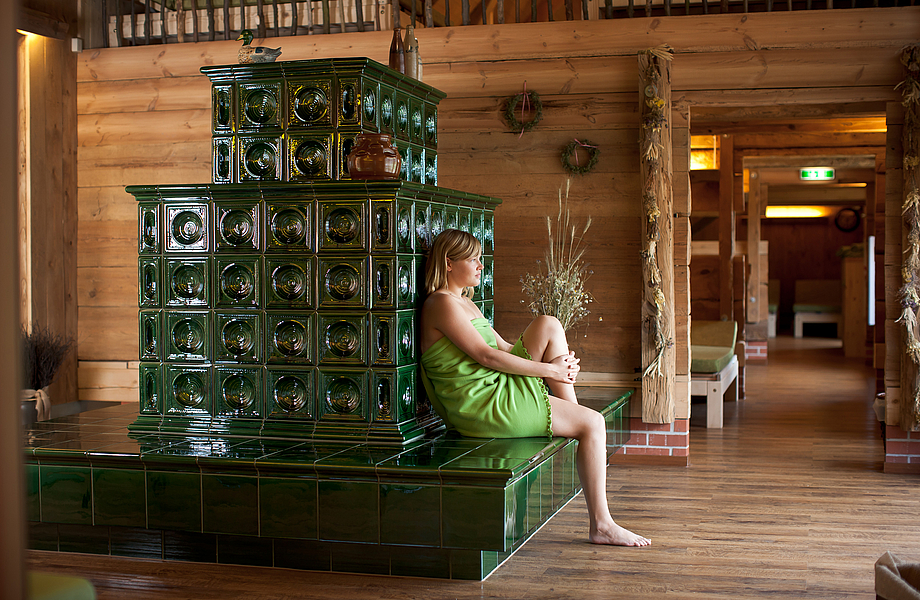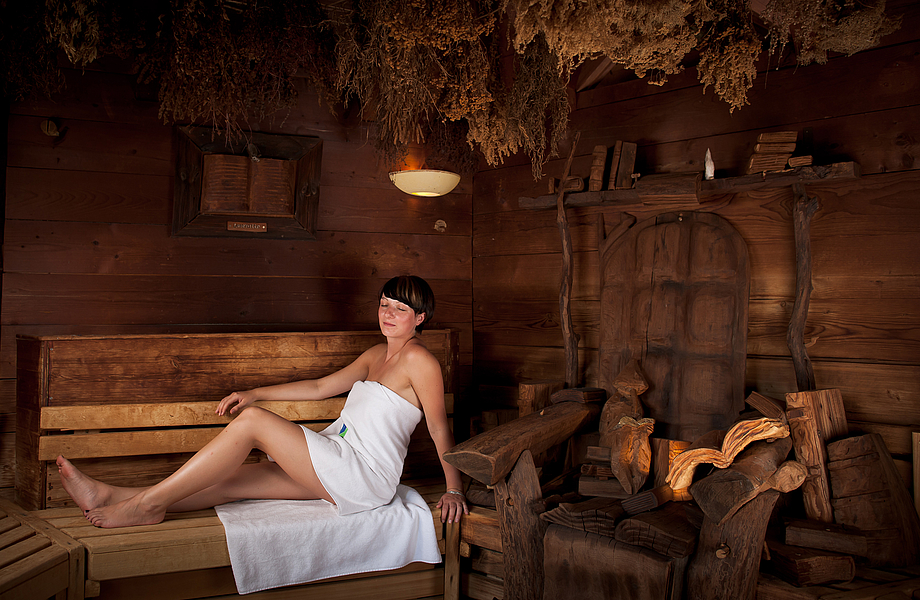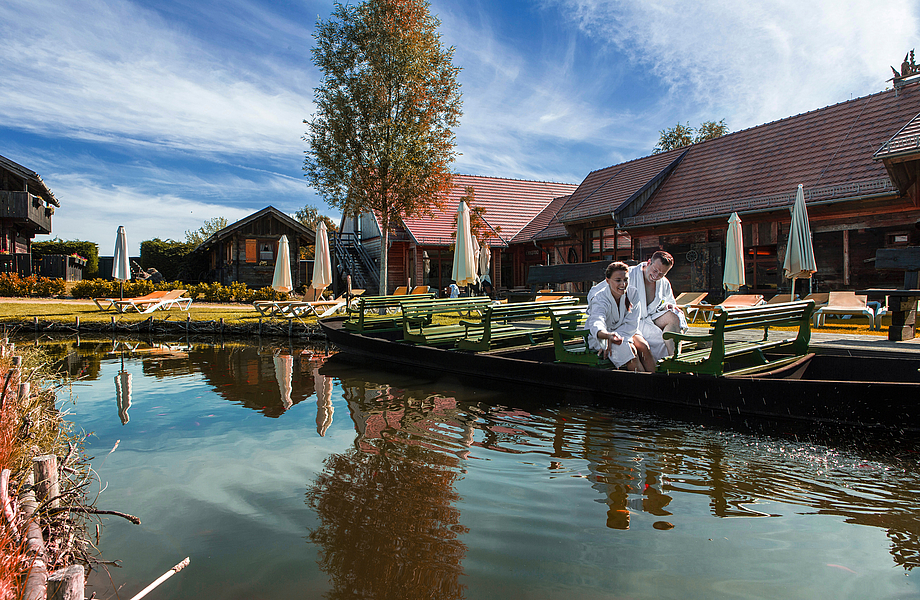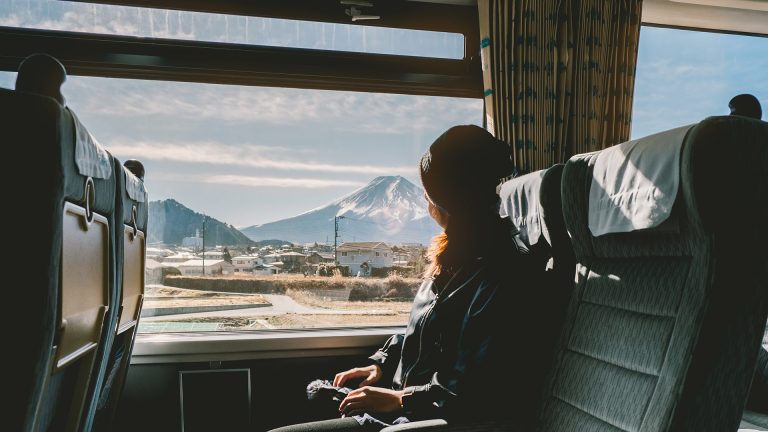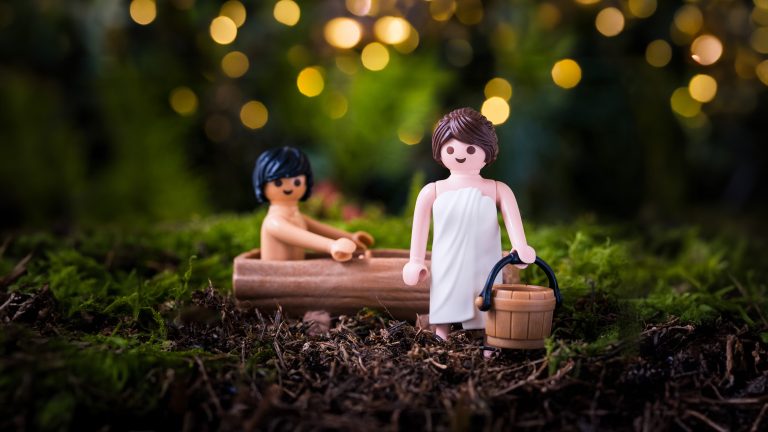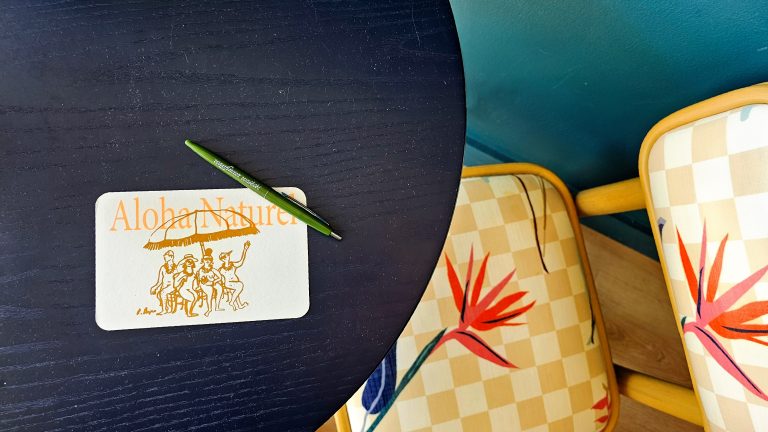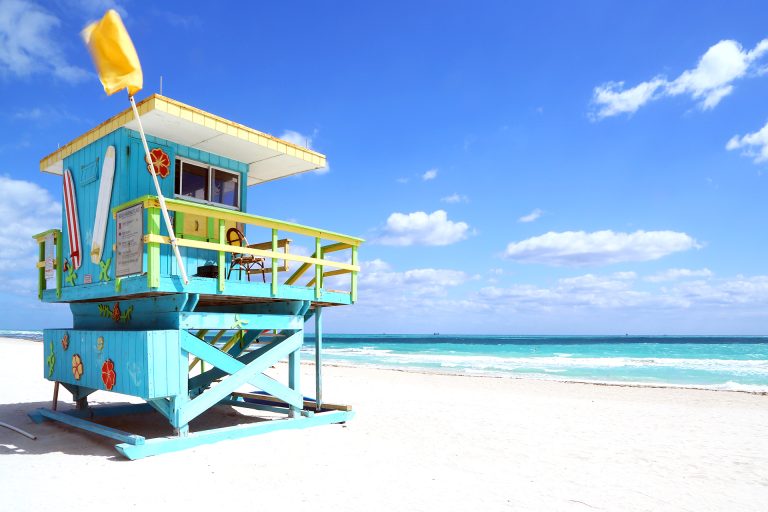Growing up in Western Germany, the Spreewald region in Brandenburg, East Germany was always a place we could only aspire to visit. Though we heard many fantastic things about it, visiting remained a distant dream. However, with the reunification of Germany and the subsequent flourishing of Berlin, Dresden, and their surroundings, these areas became more enticing to explore. Now, it has been a few years since I finally made it to the magical forested lands of the Spreewald, but with the travel season almost hitting off, I am eager to share my firsthand experience and shed light on this remarkable yet uncharted German locale for international travelers.
Less than an hour by train from Berlin or Dresden, the Spreewald is perfect for a day trip, a stopover, or some relaxing and unwinding days. Lush green meadows crossed by hundreds of miles of waterways: this is the Spreewald. Picture a fairy-tale forest where dragonflies look like little elves, trees reflect in mystic waterways as far you can see, and everything is extremely silent.
Visiting Lübbenau
My tour begins with an oarsman from a local club in the town of Lübbenau. He tells the story of how he and his mother made their way from the Spreewald to Berlin in a punt right after the Second World War in order to sell a few pickles. A punt is an open flat-bottom boat with squared ends, used in shallow waters and usually propelled by a long pole. For centuries, punts were the primary mode of transportation in the area. Our guide takes us on a boat tour in Lübbenau, known as the “City of Punting.” Punting trips vary from 2 to 10 hours. There are many types of tours, including nostalgic boat trips in early 1900s clothing, nature walks, fishing expeditions, BBQ boat rides, picnics, a “photo safari,” and a scavenger hunt with all sorts of twists and turns.
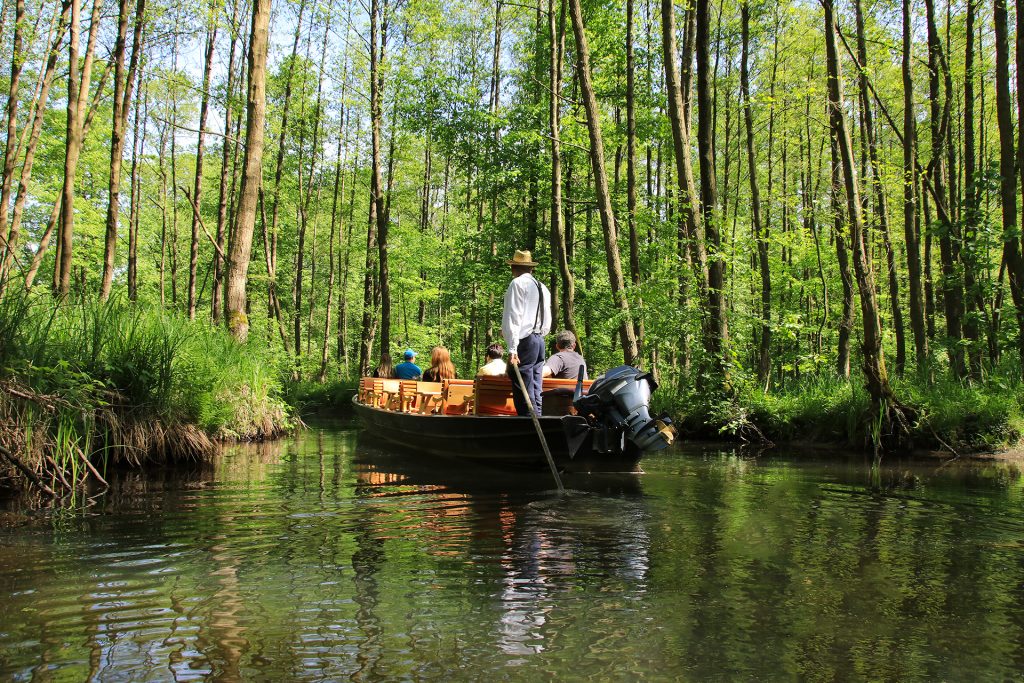
Punting Tour – Spreewald
Understanding Boat Tours in the Spreewald
A punting trip involves navigating the numerous canals and rivers in the Spreewald using traditional flat-bottomed boats known as barges or punts. These boats, measuring approximately eight meters in length, are skillfully maneuvered by an experienced bargeman wielding a long paddle.
TYPE OF PUNT TRIP
Private Punt Trip: An exclusive experience where a personal punt is reserved for your group.
Ideal for couples, families, or small groups seeking an intimate and tailored tour.
Public Punt Tour: A shared experience with other visitors, often more budget-friendly than private tours. However, participants may need to wait until a sufficient number of people assemble for the tour to commence.
Evening Tour: Commencing at sunset and lasting about two hours, this punt trip provides a unique perspective of the Spreewald at night, offering tranquility and a closer connection to nature.
Boat Trip with Food: Some punt tours offer a gastronomic twist, allowing participants to savor traditional Sorbian dishes while taking in the scenic beauty of the Spreewald.
CONSIDERATION FOR YOUR TRAVEL PLANNING
Type of Punt Trip: Decide between private or public tours, evening tours, or those inclusive of food.
Duration of the Punt Trip: Determine the amount of time you can allocate to the punt trip, as different tours have varying durations.
Group Size: Choose between the exclusivity of a private tour and the affordability of a shared experience based on your group size and preferences.
Departure Point: Select a departure point convenient to your location, with various options available throughout the Spreewald.
Price: Consider your budget, prices fluctuate based on the type of punt trip, duration, and group size.
HIGHLIGHTS OF A PUNT TRIP
Flora and Fauna: Marvel at the unique plant and animal species native to the Spreewald region.
Traditional Sorbian Villages: Gain insights into Sorbian culture at charming villages along the canals,
Historical Buildings: Admire historical structures such as water mills and fish ponds lining the rivers.
Visit the Wotschofska: A small dreamlike island nature paradise north of the village of Lehde. Surrounded by high forest, it is one of the most popular excursion destinations in the Spreewald.
CONCLUSION
A punt trip in the Spreewald promises an indelible experience, providing a profound understanding of the region’s distinctive landscape and culture. Before embarking on your journey, carefully consider the diverse punt trip options, duration, group size, departure locations, and prices to ensure a tailor-made and memorable experience.
The following tour companies offer English-language websites and information:
Spreewald Kahnfahrten Wendland
Kais Spreewald Kahnfahreten
We chose a five-hour wildlife and nature tour, which is over in no time. The oarsmen are very connected to this region and will teach you a lot about the area if you are interested. No matter which tours you decide on, you will crisscross parts of wetlands with almost 300 small canals that total over 1300 km in length–over 800 miles!
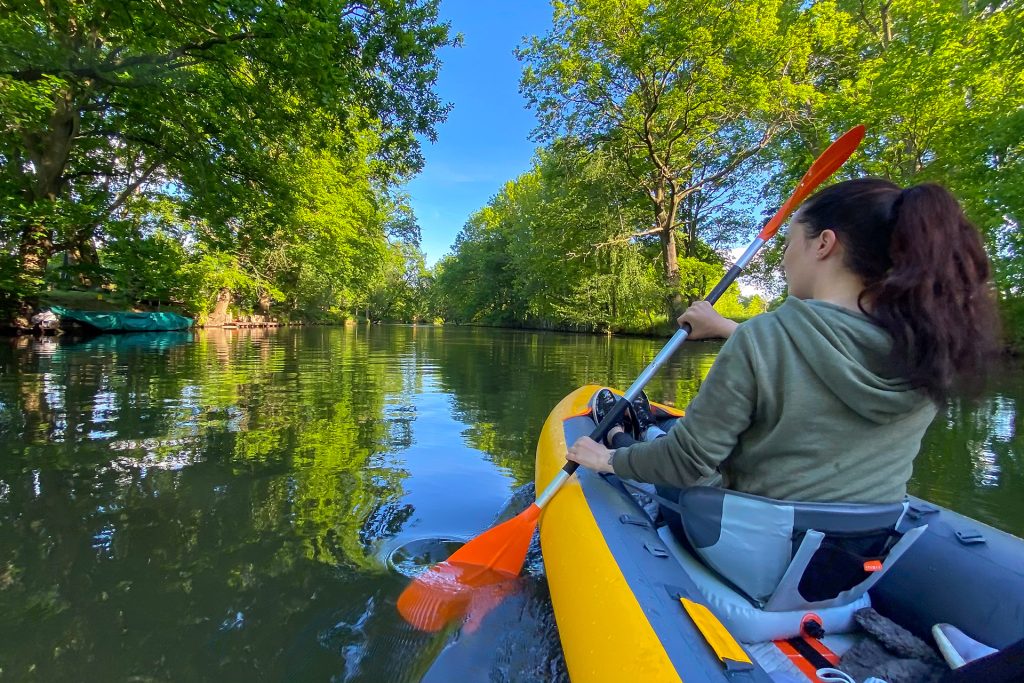
Kayaking in Lübbenau
Lübbenau is also renowned for its Gurken, or pickles–the tastiest I’ve ever had. Some say this Spreewald city is the birthplace of pickles. Yes, it’s all about the cucumber here. You can bike the Gurken-Radweg (pickle trail), cheer on the folk festival’s cucumber queen, stroll in a cucumber museum, or shop at the cucumber market. In 1991 the Spreewald became a Unesco biosphere reserve. Nature lovers and active people can enjoy canoeing, hiking, and spotting wildlife along the canals. This network of waterways is a wonderful place to explore. Most boathouses and punting stations rent out kayaks and canoes for about 20 euros a day. Bike rentals are available in the old part of Lübbenau and at the train station starting at about 8 euros a day. In the summer, it’s best to start your trip early in the morning before it gets too hot. And don’t forget the mosquito spray!
Village of Lehde
Just a short walk, bike, or boat trip away from Lübbenau is the village of Lehde, a unique place in the middle of the Spreewald. This picturesque “Venice of the Spreewald” consists of many small islands surrounded by water arms of the Spree, connected only by small pedestrian bridges.
Wotschofska: Abundant Traditions and a Touch of Mystical Flair
Following the northern bike paths from Lübbenau or going by boat you can reach the island of Wotschofska in less than three miles. Wotschofska is one of the oldest restaurant destinations in the Spreewald and was once a traditional sanctuary for people in times of need. In the ’50s, people came with the Tango Express from Berlin. They took a ride to Wotschofska and danced through the night. Recently, it was the setting of a popular German TV crime series. This may be due to the mystical flavor of the location on rainy days which reminds me of David Lynch’s northwest town of Twin Peaks. A gherkin pie with your coffee? Today it’s kind of touristy, but it does have a very unique, yet popular beer garden. Surrounded by more than 100-foot-tall trees, you can breathe in the beauty, magic, and nostalgia of the area.
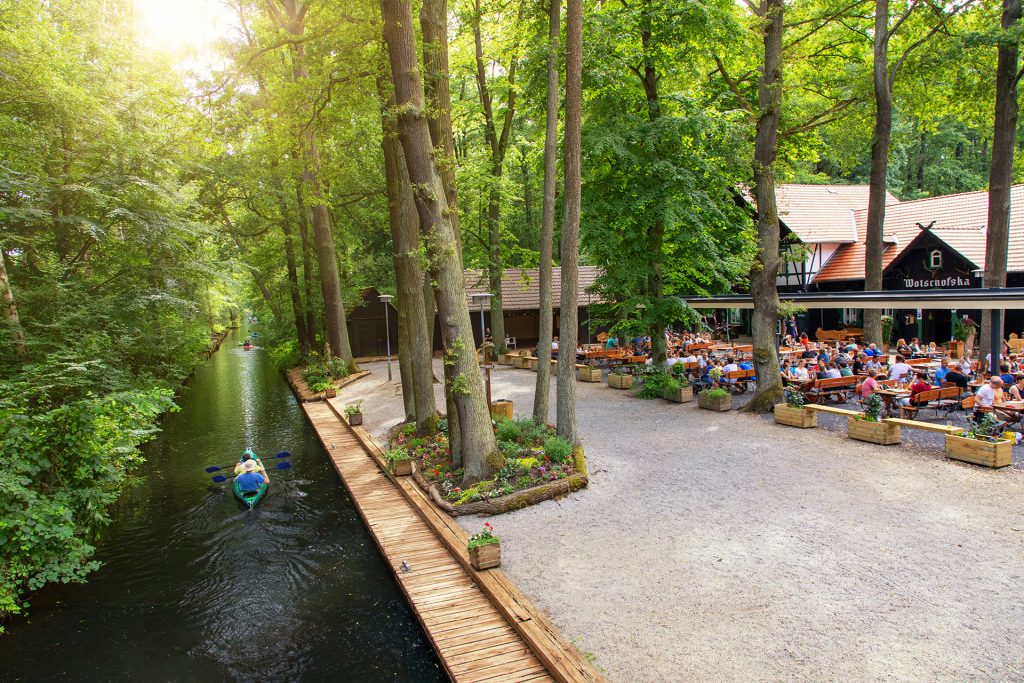
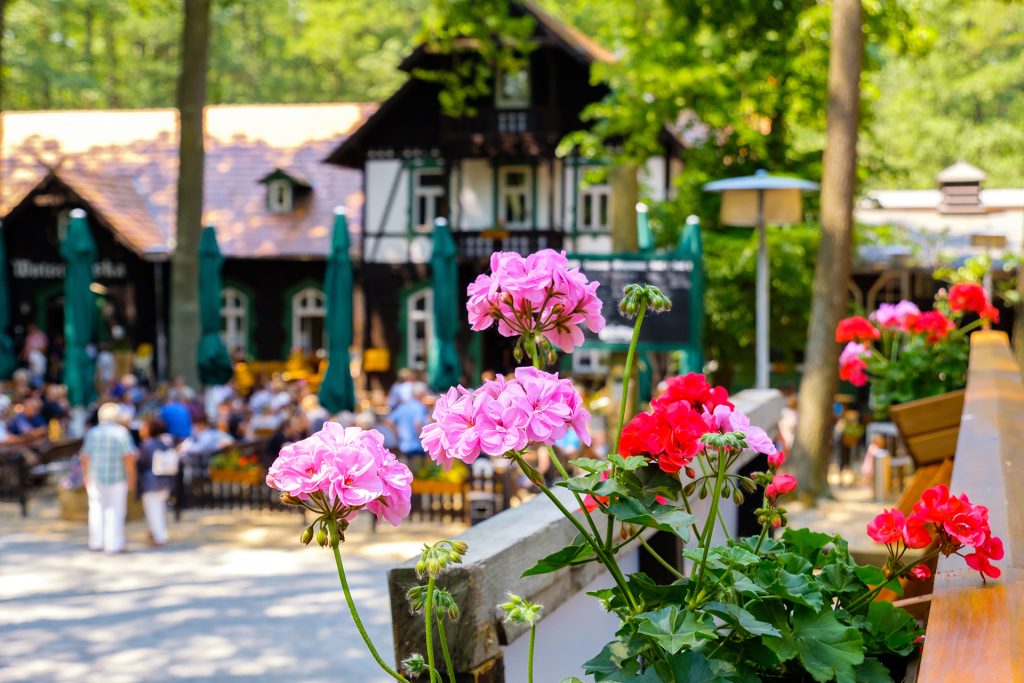
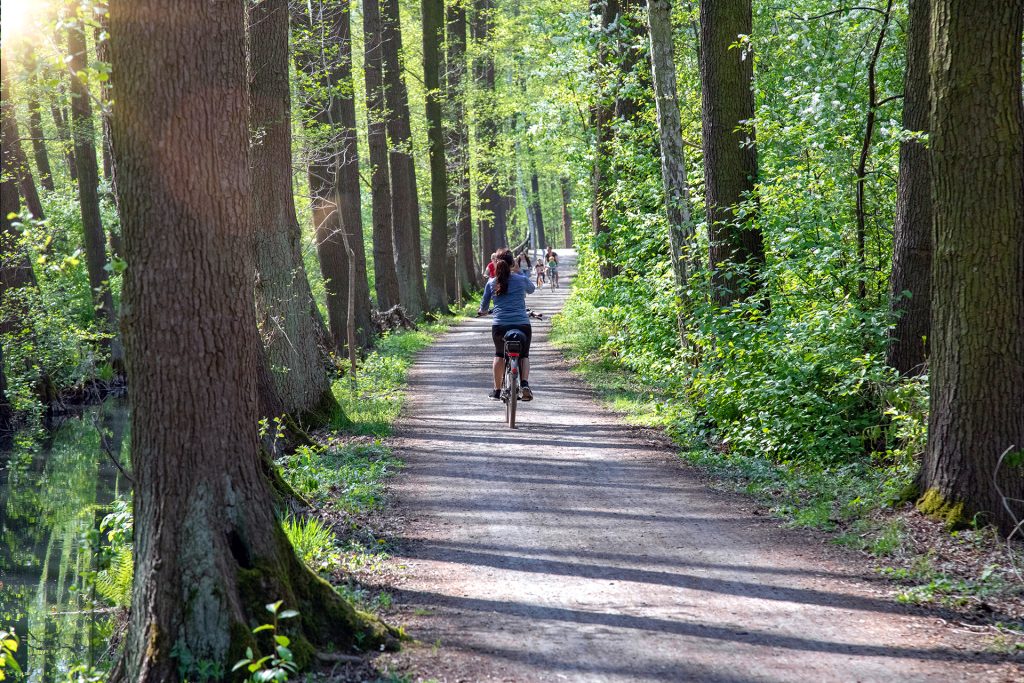
Through the Spreewald forest and along the canals winds the 155-mile bike path, the “Gurken-Radweg.” Lübbenau, Lübben, and Cottbus are larger towns along the bike trails. All are served by trains directly from Berlin or Dresden.
For centuries life in this region was tied to its waterways. No wonder the people in the Spreewald remained isolated and developed their unique culture. “Not even socialism occurred here,” is a joke of the longtime residents of the town of Lehde.
The Sorbs and a Thousand Years of Culture
The Spreewald is also home to the Slavic ethnic minority, the Sorbs, who have lived in this area for more than a thousand years. Visitors are always fascinated to encounter the region’s bilingualism, from signs and street names to conversations. Today, people over age 60, but also a few young people, still speak the Lower Sorbian language. Sorbian folk music with traditional songs, dances, and costumes is performed by professional and amateur ensembles, and you can also experience Sorbian cuisine in selected restaurants and inns.
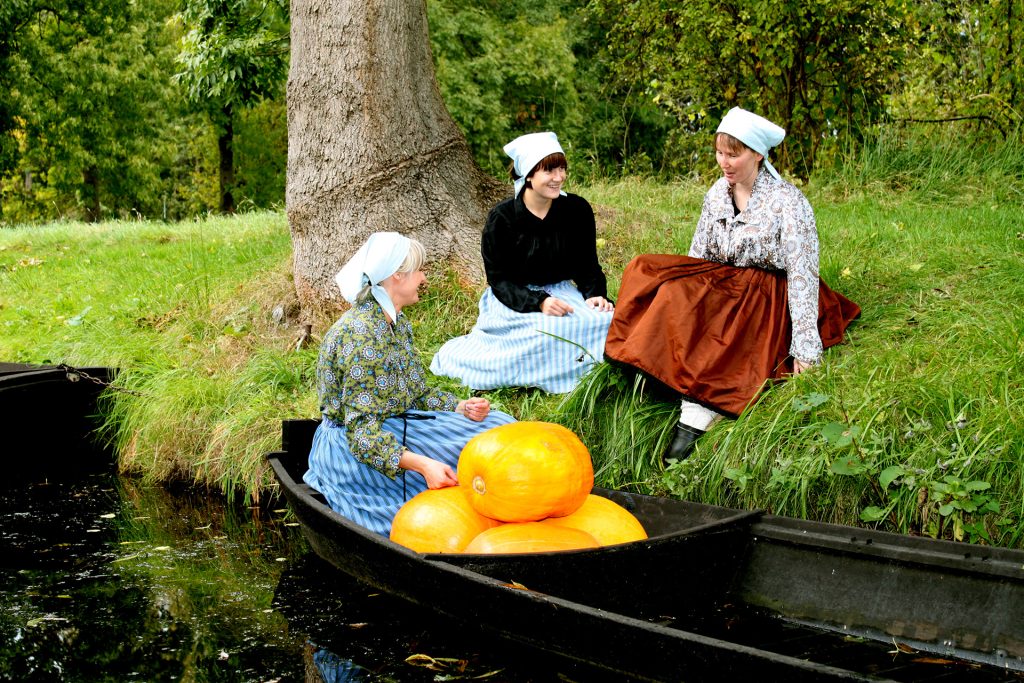

Discover Lehde’s Heritage and Events
Exploring the historic village of Lehde in the Spreewald is best done on foot or through a traditional boat excursion. Although officially considered a district of Lübbenau, Lehde possesses a distinctive charm and character of its own. Boasting a population of 130 residents and situated directly on the water, Lehde stands out as one of the most authentic and picturesque villages in the Spreewald. Even the renowned poet and author Theodor Fontane eloquently captured the spirit of Lehde, describing it as a “pocket-sized lagoon town, a Venice reminiscent of how it might have appeared 1,500 years ago when the initial fishing families sought refuge on its marshy sandy shores.”
The Open-Air Museum Lehde (open March through October) features three antiquated farms that provide insights into the 19th-century lifestyle of Spreewald inhabitants. The museum is best known for telling the history of the Sorbs, a distinct ethnic group of Slavic origin that has lived in this region for at least 1,400 years. Historic Sorb farm buildings, with traditional and video displays of what rural life in the Spreewald was like in the 1800s, are fantastic. They also show a film using original footage from the 1950s of how the whole community harvested the cucumber crop. It then follows the cucumbers on their journey from the field to the pickle jar.
It was the Sorbs who introduced the cucumber to the region when they migrated here from the Carpathians. Sorbs haven’t always had an easy time in Germany, with periodic attempts to eradicate their unique culture. Counterintuitively, they fared pretty well under National Socialism – which viewed other Slavic peoples as subhuman. They were protected during the years of communist rule, and today their culture and language are protected by law.
Lehde hosts several notable events, such as the annual Lehde Festival (late September), where women adorned in traditional attire and a barge parade showcase the village’s traditional side.
For a more contemporary experience, the Spreewald Nights of Light (several weekends in July/August) illuminate the village with vibrant colors, transforming bridges, trees, and houses. Booking in advance is advisable, especially for the unique boat trips during this period.
The Spa Resorts
The culture, tradition, and nature of the region are already reason enough for a visit. But if you have some extra time for recreation, there are some outstanding spa and wellness resorts in the area.
Spreewelten Bad & Sauna: Penguin Pool Party and Sorbian Fairy Tales

Swimming with real penguins is a very unique experience at Spreewelten Bad in Lübbenau. Paul, Skipper, and their other penguin friends are already waiting in the outdoor pool. Separated only by a 15.5-meter-long curved plexiglass pane. This extraordinary pane allows you to swim alongside the playful and curious animals in a friendly competition and is currently the largest of its kind in Europe and, through its construction, creates a unique bathing experience. In total, over 46 meters of glass fronts provide direct insights into the realm of the little tuxedo wearers. Whether in summer or winter, the water in the visitor’s outdoor pool is comfortably warm. Additionally, bubble loungers in the outdoor pool and a large lawn invite relaxation. The Spreewald Bridge, connecting the lawn to the guest pool, offers a fantastic overview of the entire penguin facility.
The second unique experience is to be found in the Sauna World. In their Roman baths and cozy sauna, you can find peace and relaxation. A great variety of saunas lets you experience different scents, aromas, and temperatures. In the sauna called “Lutki cave,” Sorbian for “ dwarf’s cave,” you can listen to recordings of Spreewald tales. And where else could you possibly find a cucumber-scented sauna? Sauna sessions at Spreewelten are a genuine experience, and true relaxation comes with one of the numerous arrangements. For example, “Just YOU & ME” can forget about daily life and enjoy togetherness during a Hamam ceremony. Each guest can find a suitable option from the broad massage and wellness offerings. The Sauna Bistro offers delightful culinary experiences. Rested at the end of your visit, you return home with memories of an unforgettable stay, eager to take this break again soon.
Burg (Spreewald): Modern Retreat and Historical Charm
The nearby city of Burg offers treatments in its thermal baths and has newly discovered mineral springs plunging more than 1,300 meters below the green idyll of the Spreewald. Opened in 2005, the Spreewald Therme lets visitors experience this precious liquid in many different ways. The bath offers six pools and a warm outdoor pool with a flow channel, featuring temperatures ranging from 64 to 100 degrees Fahrenheit and varying salt concentrations. The steam bath and salt inhalation in the form of cucumber barrels complete the high-quality pampering offering.
In the spa area, saunas with different facilities and temperatures up to 200 degrees Fahrenheit provide a variety of sauna experiences for regeneration and relaxation. Between sauna sessions, you can enjoy freshly squeezed juices or other refreshing drinks at the sauna bar. Two fireplaces and the relaxation room with a view of the sauna garden invite you to unwind. This hydrotherapy haven in the Spreewald is a memorable experience.
Bleiche Resort & Spa, also in Burg, is an excellent and luxurious resort. Since the ’90s it has been a landmark of the region. Some of its buildings date back to 1750 when Frederick the Great laid the foundation stone and had his soldiers’ uniform shirts made and whitened here. (Bleiche is German for bleach.) The spa offers classic wellness treatments with regional products, various pools, a sauna, a Turkish bath or hammam, a separate women’s spa, and a fitness center. And their award-winning restaurant offers a superb culinary experience with regional recipes. With its convenient location between Berlin and Dresden, the Spreewald is a wonderful destination for the perfect break.

